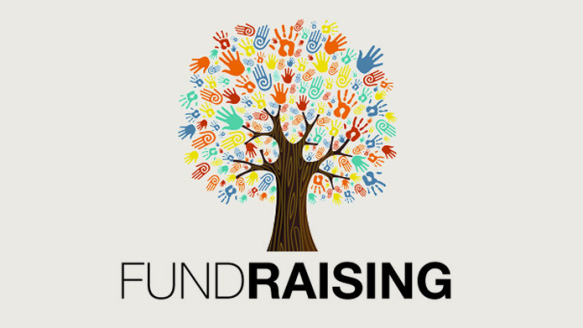The Function of Area Involvement in Nonprofit Fundraising: Structure Lasting Relationships for Lasting Assistance
Neighborhood engagement is increasingly identified as a vital part of effective nonprofit fundraising. By fostering real connections with neighborhood stakeholders, organizations can grow trust and commitment, which are crucial for sustainable assistance. Nevertheless, the approaches and techniques used to engage communities vary commonly, elevating essential concerns regarding performance and effect. What are the ideal methods for cultivating these essential connections, and just how can nonprofits measure their success in this sector? Comprehending these characteristics could substantially affect the future of fundraising efforts and the general goal of not-for-profit organizations.
Understanding Area Interaction
Area interaction is a crucial part of successful nonprofit fundraising initiatives. Nonprofits need to identify vital stakeholders-- such as community participants, local organizations, and other organizations-- to produce efficient engagement strategies.
Efficient area interaction is asserted on energetic listening and responsiveness to the demands and passions of the area. This process entails soliciting responses, comprehending area dynamics, and guaranteeing that the organization's goal straightens with regional top priorities. Involving the community can take different forms, consisting of public conferences, volunteer opportunities, and collaboration initiatives, each designed to urge involvement and financial investment in the company's goals.
Moreover, community interaction should be approached as a recurring discussion as opposed to an one-time effort. By cultivating a comprehensive setting where community voices are listened to and valued, nonprofits can develop a strong structure for future fundraising undertakings. Ultimately, a deep understanding of community interaction encourages organizations to produce genuine connections that improve their general performance and sustainability.
Benefits of Strong Relationships
Solid relationships developed with community interaction return numerous benefits for not-for-profit fundraising initiatives. Primarily, these connections foster trust fund and credibility, necessary parts in encouraging donors to add. When potential supporters see a nonprofit actively associated with their neighborhood, they are a lot more most likely to think in its mission and impact.

In addition, these partnerships promote reliable interaction. Nonprofits can leverage their links to share stories of impact, updates, and needs, ensuring that advocates remain educated and engaged. This open line of interaction not only reinforces bonds however also urges word-of-mouth promo, expanding the not-for-profit's reach.
Last but not least, strong neighborhood ties can draw in brand-new companions and sponsors. Services and people are extra inclined to line up with companies that demonstrate meaningful neighborhood participation, offering extra resources and support that can significantly improve fundraising capacities. Therefore, cultivating durable connections via neighborhood involvement is essential to a nonprofit's lasting fundraising success.
Methods for Reliable Involvement
Exactly how can nonprofits properly involve their areas to boost fundraising initiatives? Establishing targeted techniques is crucial for promoting significant links. Initially, leveraging social media systems allows companies to share their goal dynamically and interactively, reaching a broader target market. Routine updates, engaging material, and calls-to-action can galvanize area passion and engagement.
2nd, hosting area occasions, such as workshops, volunteer possibilities, or fundraising drives, promotes in person interaction, allowing nonprofits to showcase their effect and efforts. These events not only elevate funds however additionally grow relationships and permit community participants to involve directly with the cause.
Third, carrying out tailored communication strategies can enhance involvement. Tailoring messages to particular donor sections based upon passions and past payments promotes a feeling of belonging and investment in the company's objective.
Last but not least, producing collaborations with regional companies and area leaders can enhance outreach initiatives. Collective efforts can enhance exposure and reputation, demonstrating a collective commitment to the area's well-being. By incorporating these strategies, nonprofits can construct lasting connections that enhance fundraising efforts and drive sustainable assistance.
Measuring Interaction Success
While involving the community is essential for effective nonprofit fundraising, determining the performance of these engagement initiatives is equally essential. Developing clear metrics permits companies to useful site analyze exactly how well they are getting in touch with their target market and achieving their fundraising goals. Secret efficiency indications (KPIs) such as benefactor retention rates, volunteer participation levels, and engagement on social networks platforms offer substantial information for examination.

Regularly evaluating these metrics makes it possible for companies to pivot their methods when required, making certain that community engagement remains aligned with their overall goal. Moreover, sharing these results description with stakeholders promotes openness and develops trust fund, motivating more neighborhood involvement. Ultimately, a robust dimension framework not just notifies future fundraising initiatives however also enhances the partnership in between the not-for-profit and its fans, preparing for lasting success.
Case Researches in Area Impact
Many study highlight the profound influence that community interaction can carry nonprofit fundraising success. One remarkable example is the "Something to chew on" initiative, where a regional food financial institution partnered with institutions and businesses to host area dinners. These events not just raised funds however additionally fostered a feeling of belonging amongst participants, significantly enhancing contributor retention prices.
One more engaging situation is the "Environment-friendly Spaces Project," which involved neighborhood residents in the revitalization of urban parks. This initiative not only gathered monetary assistance from regional businesses however likewise cultivated a volunteer base that contributed to continuous upkeep and shows. The feeling of ownership and satisfaction amongst neighborhood members equated into continual index payments.
In the world of arts, the "Art for All" project efficiently involved local musicians and clients to create collaborative art installations, causing raised presence and contributions for a regional arts not-for-profit.
These instances highlight that when nonprofits focus on community involvement, they can create long lasting partnerships that improve fundraising efforts, ensuring sustainable support and fostering a dynamic community culture. Such situations show that area interaction is not merely an approach but a necessary pillar of nonprofit success.
Verdict
In final thought, area engagement is integral to the success of nonprofit fundraising initiatives. Inevitably, a durable foundation of neighborhood assistance not only magnifies fundraising prospective but likewise grows a society of collaboration, important for achieving long-lasting business goals and sustaining meaningful influence. fundraising consultant.
Nonprofits should recognize key stakeholders-- such as neighborhood participants, regional organizations, and other organizations-- to produce reliable involvement techniques.
In final thought, neighborhood involvement is indispensable to the success of nonprofit fundraising efforts.